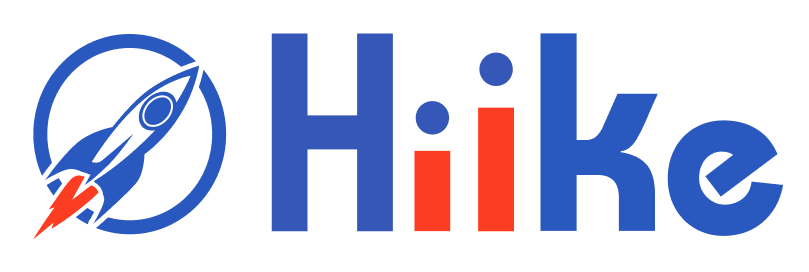In the tech-driven world, excelling in coding interviews often boils down to your proficiency in DSA (Data Structures and Algorithms). Employers across top-tier companies emphasize these core concepts because they form the backbone of problem-solving and efficient coding. For aspiring software engineers, mastering DSA is more than a requirement; it’s the gateway to a successful career in the tech industry. This comprehensive guide will dive deep into the key concepts of DSA essential for coding interviews while showcasing how you can hone your skills effectively.
Why Is DSA Important in Coding Interviews?
Data Structures and Algorithms are crucial in coding interviews for several reasons. First, they test your ability to solve complex problems efficiently. Second, they reflect your understanding of computer science fundamentals. Lastly, DSA proficiency indicates your capability to write optimized code that can handle real-world challenges. Interviewers use DSA questions to evaluate your analytical thinking, logical reasoning, and technical expertise.
Whether it’s optimizing a search function, managing large datasets, or designing scalable systems, a solid grasp of DSA is indispensable for tackling challenges that software engineers face daily. Let’s explore the essential concepts in DSA that you should prioritize while preparing for coding interviews.
1. DSA in Arrays and Strings
Arrays and strings are foundational data structures in DSA. They often form the basis of questions in coding interviews. Key concepts include:
- Traversal: Understanding how to iterate through arrays and strings efficiently.
- Manipulation: Techniques to reverse, rotate, or sort arrays and modify strings.
- Two-pointer Technique: Solving problems like finding duplicates or checking for palindromes.
- Sliding Window: Optimizing problems such as finding the maximum sum of subarrays.
Mastering these concepts ensures you’re ready for questions ranging from simple array manipulation to complex string pattern matching.
2. Linked Lists
Linked lists are another fundamental concept in DSA. Unlike arrays, linked lists offer dynamic memory allocation, making them suitable for specific applications. Key topics include:
- Singly vs. Doubly Linked Lists: Understanding their structure and differences.
- Common Operations: Reversing a linked list, detecting cycles, and merging two lists.
- Applications: Real-world uses such as implementing stacks and queues.
Interviewers frequently test your ability to work with linked lists as they demand a deep understanding of pointers and dynamic memory.
3. Stacks and Queues in DSA
Stacks and queues are versatile data structures that solve a variety of problems. Essential concepts include:
- Implementation: Using arrays or linked lists to build stacks and queues.
- Stack Applications: Validating parentheses, evaluating postfix expressions, and solving the next greater element problem.
- Queue Variants: Understanding priority queues and dequeues.
Learning these structures helps tackle questions involving recursion, order preservation, and task scheduling.
4. Trees and Graphs
Trees and graphs form the advanced core of DSA and are vital for coding interviews. Key concepts include:
- Tree Traversals: In-order, pre-order, post-order, and level-order traversal.
- Binary Search Trees (BSTs): Efficient searching and sorting mechanisms.
- Graph Representations: Adjacency list, adjacency matrix, and edge list.
- Graph Algorithms: Breadth-First Search (BFS), Depth-First Search (DFS), Dijkstra’s algorithm, and Kruskal’s algorithm.
Proficiency in trees and graphs is essential for solving problems related to networks, hierarchies, and pathfinding.
5. Hashing
Hashing is a powerful concept in DSA that facilitates constant-time complexity for search and retrieval. Key topics include:
- Hash Tables and Hash Maps: Understanding their structure and usage.
- Collision Handling: Techniques like chaining and open addressing.
- Applications: Solving problems like finding duplicates, counting frequencies, and implementing caches.
Hashing ensures you can efficiently handle large datasets, making it a go-to tool for coding challenges.
6. Dynamic Programming (DP)
Dynamic programming is a critical algorithmic paradigm in DSA. It involves breaking down problems into smaller subproblems and solving them systematically. Key concepts include:
- Memoization: Storing results of subproblems to avoid redundant computations.
- Tabulation: Iterative approach to building solutions from smaller subproblems.
- Classic DP Problems: Knapsack, Longest Increasing Subsequence, and Matrix Chain Multiplication.
DP questions test your ability to identify overlapping subproblems and devise optimal solutions.
7. Recursion and Backtracking
Recursion and backtracking are essential for solving problems involving permutations, combinations, and decision trees. Key areas include:
- Base Cases: Understanding termination conditions for recursive calls.
- Optimization: Minimizing redundant calls in recursive solutions.
- Backtracking Applications: Solving N-Queens, Sudoku, and maze problems.
Mastering recursion and backtracking ensures you can handle complex, constraint-driven problems effectively.
8. Sorting and Searching Algorithms
Sorting and searching algorithms are cornerstones of DSA. Common algorithms include:
- Sorting: Bubble Sort, Quick Sort, Merge Sort, and Heap Sort.
- Searching: Binary Search and its applications.
- Optimization: Analyzing time and space complexity.
These algorithms are frequently tested as they form the basis of efficient data handling.
9. Bit Manipulation
Bit manipulation is an advanced topic in DSA but is highly rewarding in coding interviews. Key concepts include:
- Binary Representation: Understanding numbers in binary form.
- Bitwise Operations: AND, OR, XOR, and left/right shifts.
- Applications: Finding subsets, detecting power of two, and swapping numbers without a temporary variable.
Interviewers often test bit manipulation for its efficiency and clever problem-solving potential.
10. Greedy Algorithms
Greedy algorithms focus on solving problems by choosing the best option at each step. Key areas include:
- Activity Selection: Choosing the maximum number of activities.
- Huffman Encoding: Building efficient data compression algorithms.
- Applications: Solving problems like coin change and job sequencing.
Understanding greedy algorithms ensures you can design simple, efficient solutions for optimization problems.
How Edvance Helps You Master DSA
Edvance is a cutting-edge edtech startup dedicated to empowering software engineers by enhancing their skills in data structures & algorithms (DSA) and system design. Through a carefully designed curriculum and expert mentorship, Edvance bridges the gap between theoretical knowledge and practical application, ensuring engineers are job-ready for top-tier companies.
With a focus on career advancement, Edvance also provides placement assistance, helping you secure opportunities at leading tech firms. Whether you’re a beginner or an experienced professional, Edvance equips you with the tools and techniques needed to excel in coding interviews and thrive in the competitive tech industry.
Tips for DSA Success in Coding Interviews
- Practice Regularly: Consistent practice is key to mastering DSA.
- Understand the Basics: Build a strong foundation in core data structures and algorithms.
- Solve Problems on Platforms: Use platforms like LeetCode, HackerRank, and Codeforces to sharpen your skills.
- Time Management: Learn to solve problems within the time constraints of an interview.
- Mock Interviews: Participate in mock interviews to get comfortable with real-world scenarios.
Conclusion
Mastering DSA is a journey that requires dedication, practice, and the right guidance. By focusing on the key concepts outlined in this guide, you can build a strong foundation and excel in coding interviews. Remember, the goal is not just to crack interviews but also to become a problem-solver who can tackle challenges in the tech industry effectively.
Take the first step towards success by exploring resources like Edvance that are designed to empower you with the skills and confidence to achieve your career goals. With the right tools, mentorship, and practice, you can master and secure your dream job in tech.



